Let’s face it–you want to know how to get more reviews. But the increased access to online shopping has drastically cut down the amount of brick and mortar businesses we frequent.
In fact, the PowerReviews report on How to Beat Amazon shows that in a single month nearly 60% of people make up to three online purchases through Amazon alone. As online shopping grows, so too does the competition.
And with the Proven Power of Reviews report stating 86% of consumers say reviews are an essential resource for purchase decisions, product reviews are more critical than ever. To effectively drive traffic, conversions and sales you need to know how to get more reviews from your customers.
But don’t sweat just yet–we’re going to tell you how to get more reviews and what actually makes a quality review in the first place. We’ll also show you how to leverage a ratings and review platform to make your life easier and why this content is essential for your shoppers.
- A Look at the Modern Product Review
- Why You Need More Reviews
- What Makes a Quality Product Review
- 8 Ways to Get More Reviews Today
- Using A Ratings and Review Platform
To make things easier, use these jump links to navigate between sections. If you’re eager to get to the tips right away, simply click on 8 Ways to Get More Reviews Today:
- Want to start getting more reviews today? Get in touch with the PowerReviews team and we’ll show you how our software increases authentic review content by our various collection features.
A Look at the Modern Product Review
Before we dive into the importance of reviews and how to get more product reviews, let’s take a look at a modern example. Typically, the average online review consists of several components, including:
- An average star rating out of 5
- Custom product feedback, such as questions and answers, from purchasers
- Visual content such as images and videos shared from purchasers
- Customer feedback such as pros, cons and best uses
- Size and fit information from purchases
- Badging verifying the user’s qualification
There are also brands and retailers that use ratings and review platforms to customize the look of their forms and the information that they share. This allows brands and retailers to sort reviews by their pros and cons, ask users to describe themselves, add tags unique to product types and customize the CSS to be more on-brand.
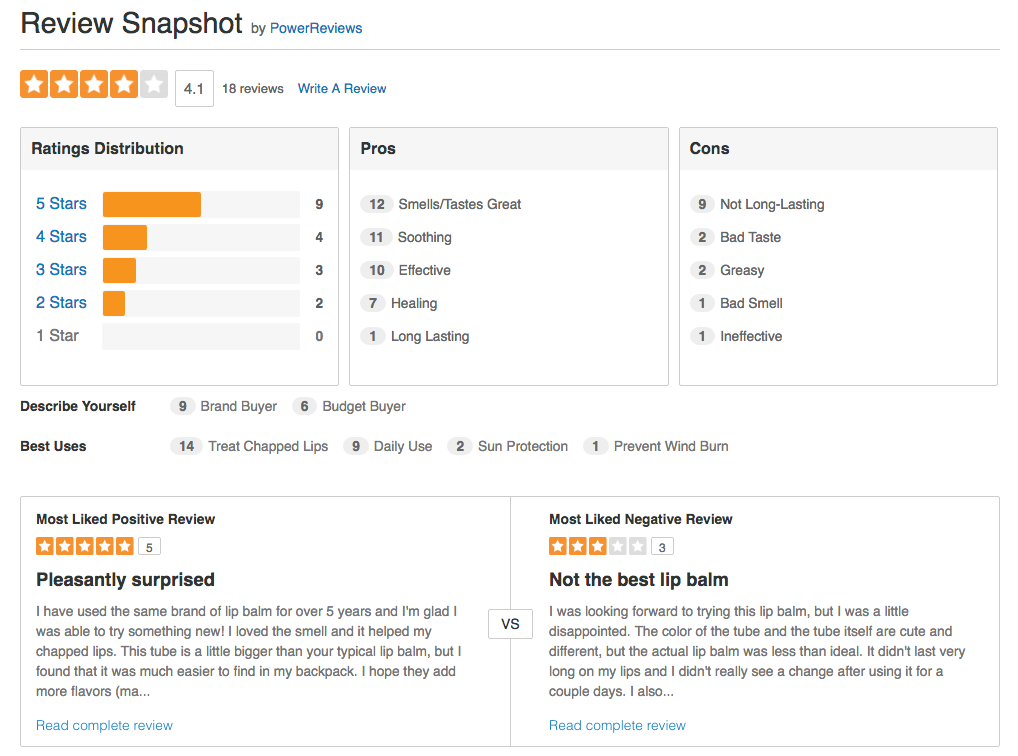
Why You Need More Product Reviews
PowerReviews works with thousands of brands and retailers to help collect, display and syndicate user-generated content all over the web. Our years of experience with ratings and reviews gives us access to a ton of data, like customer sentiment analysis, that sheds light on the importance of product reviews. Perhaps the most important concept to understand is the sheer number of consumers that tell us reviews are essential to making a purchase decision.
While that’s all fine and well, ratings and reviews aren’t going to get much company buy-in if they don’t contribute to the bottom line. We’re providing a few statistics to help you understand the true impact of ratings and reviews.
Let’s look at how to improve aspects of your business like traffic, conversion rates, sales and product insights.
Product Reviews Increase Traffic
Data from the PowerReviews report Mapping the Path to Purchase discovered 35% of consumers begin their purchasing journey on a search engine. And if you’re not within the first few positions of the results pages, you’re missing out on incredibly qualified traffic.
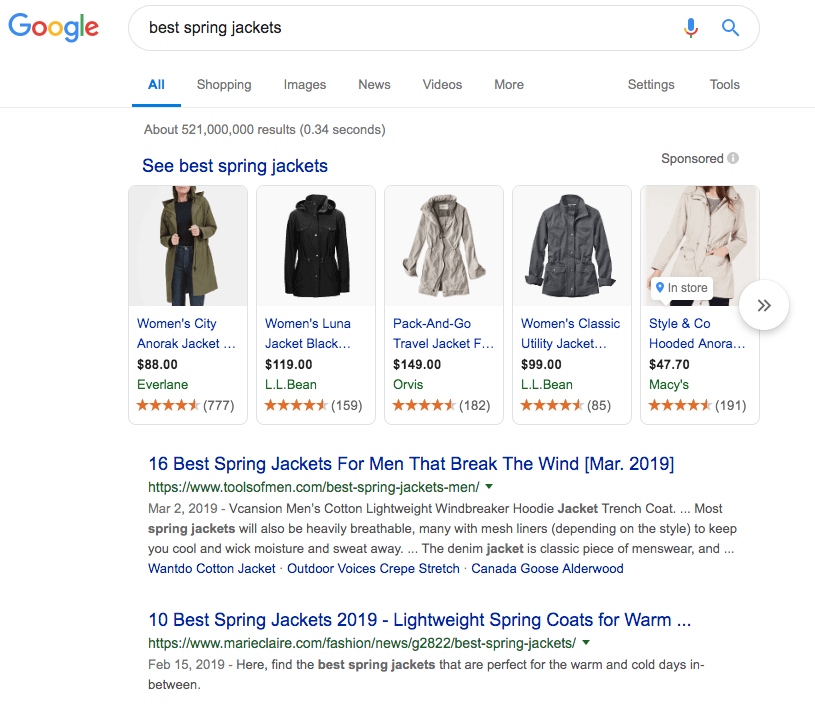
That’s where product reviews come in. Google actually indexes product reviews, which means their algorithm reads your product’s reviews and makes them searchable or visible on search. So by getting more product reviews, you increase the number of keywords where your products ranks on Google.
These are especially relevant keywords as they consist of consumer language instead of marketing copy. Think of the “best spring jackets” search example above. Search results show specific products, with reviews and links directly to the product page.
Additionally, examples like Lush show the overall reviews for the product in the organic search result. For example, the PowerReviews customer Lush ranks in search for a popular keyword about shower scrubs thanks to their customers’ reviews.
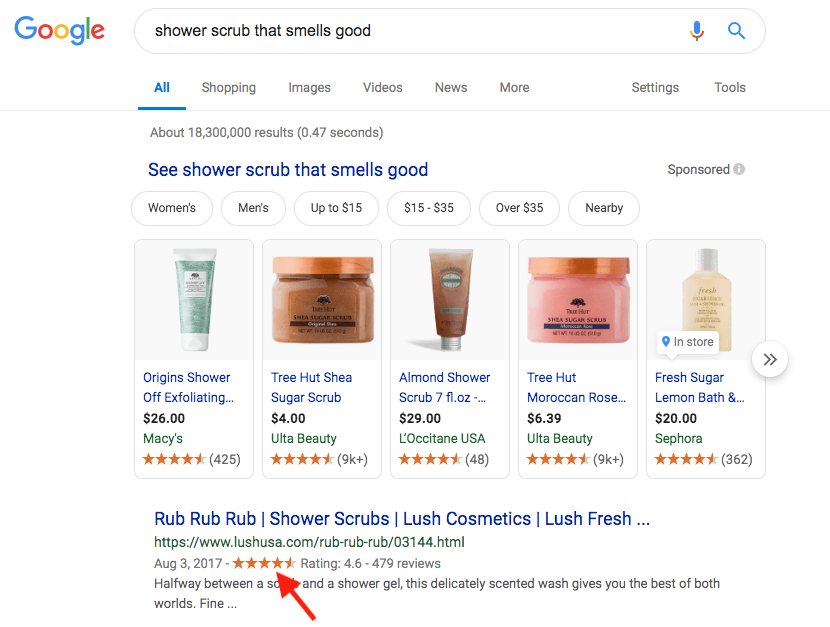
That’s not an isolated incident. Our customers see an average 108% lift in impressions on their product pages when their number of reviews increases from zero. Also, some of our clients see as much as a 239% lift in impressions to product pages with at least one review compared to none.
Product Reviews Increase Conversions
As customers continue to look online when purchasing more high consideration products, it’s important to reduce barriers to conversion. Imagine you’re looking to make a life-changing purchase online by buying something like a mattress. However, you don’t have the opportunity to feel the mattress in person or the type of mattress you want isn’t for sale in stores around you.
The question becomes is the mattress too soft, too hard or does it feel just right? Product reviews ease those purchasing decision barriers by providing your customers with key insights needed to buy confidently. You spend almost a third of your life in your bed, so we doubt you’d buy a new mattress with no reviews, recommendations or tips from advertisements.
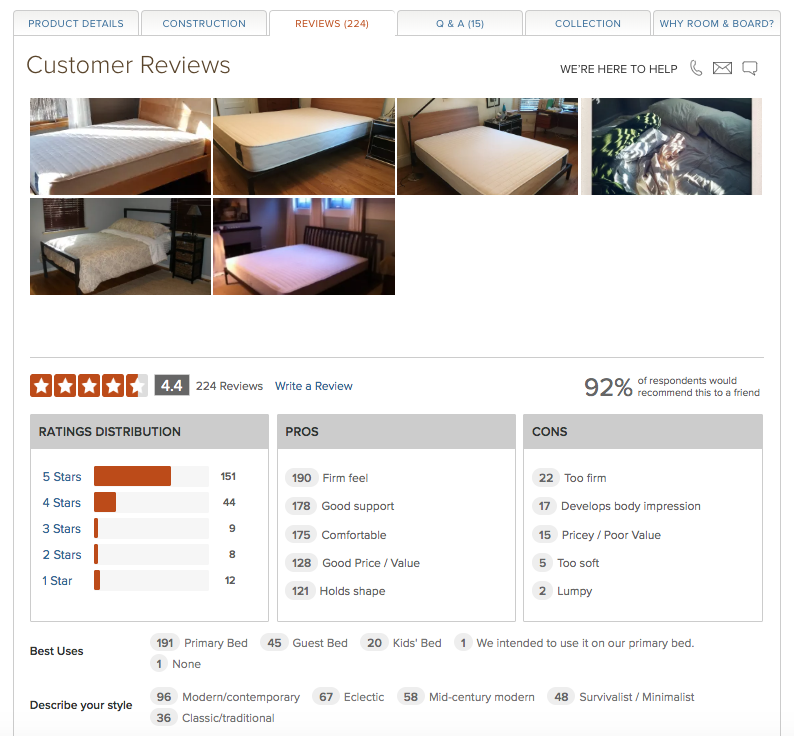
Room & Board, a contemporary home furnishings retailer with mattresses in their online catalogue, fully understands the importance of reviews for their products. The company does a phenomenal job collecting and displaying their product review content, and in turn, providing a ton of pros and cons descriptions found in their reviews.
Product Reviews Create Better Products
To continue with the mattress example, let’s imagine that users who are ordering your beds are frequently leaving reviews commenting on a odd chemical smell that came with the box. Maybe you have a significant amount of reviews saying there’s poor edge support or the material tends to rip easily.
While it’s nearly impossible and quite expensive to try and be perfect with your products, there’s cues your brand can take in review content to make overall improvements. The problem is, digging through the vast amounts of product reviews takes up a lot of manpower and time.
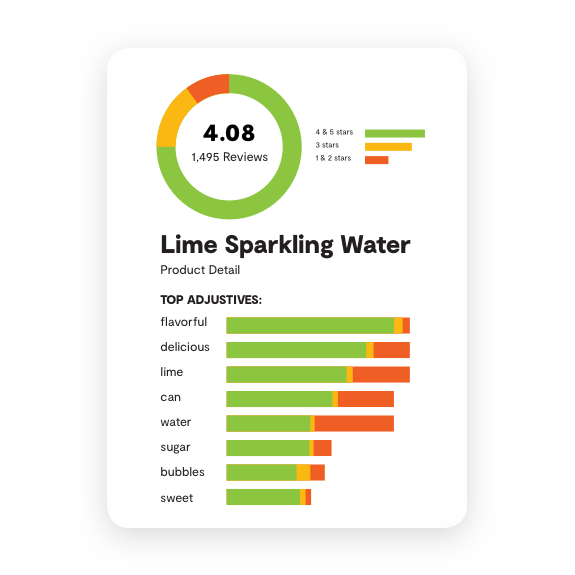
That’s why PowerReviews developed Product Pulse, a feature included in our Intelligent Suite. Product Pulse digs through your review content and provides a detailed report on common adjectives used and other sentiment analysis associated with your product.
Whether by accident or on purpose, there are brands that completely ignore these messages, finding it easier to bury their heads in the sand than respond to criticisms. These companies will see sales dwindle as product ratings and reviews continue to skew negative.
However, there are leading brands that leverage product reviews–both positive and negative–and use that content to create better products. By analyzing common problems, brands can fix products faster and back up their claims with manufactures with data.
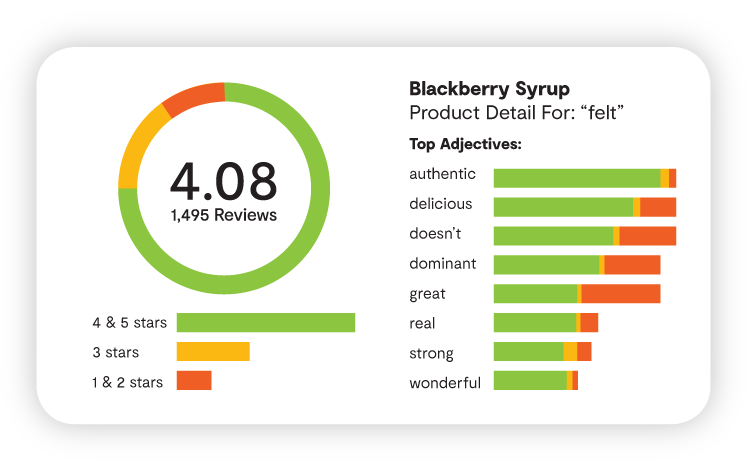
The best ecommerce managers take this feedback into consideration and pass it to the proper internal teams to guide improvements. And the top ecommerce managers will actually respond to those reviews alerting their customers their feedback is appreciated. Those customers will feel empowered and future shoppers will see that a brand cares about its customers.
What Makes a Quality Product Review?
Now that we’ve established the importance of increasing product reviews from your customers, let’s move on to what makes a great product review. Obviously it’s important to drive reviews that are more than a few short words, but what else can you do to help increase the quality of content on your pages?
Customized Fields for Product Type
One little-known strategy to generate more robust reviews is to customize each of your displays to share information specific to each product type. For example, if you’re selling a sweatshirt or pair of shoes, then collect and share information on the fit, sizing and comfort to help sway buyers on the cusp of a purchase.
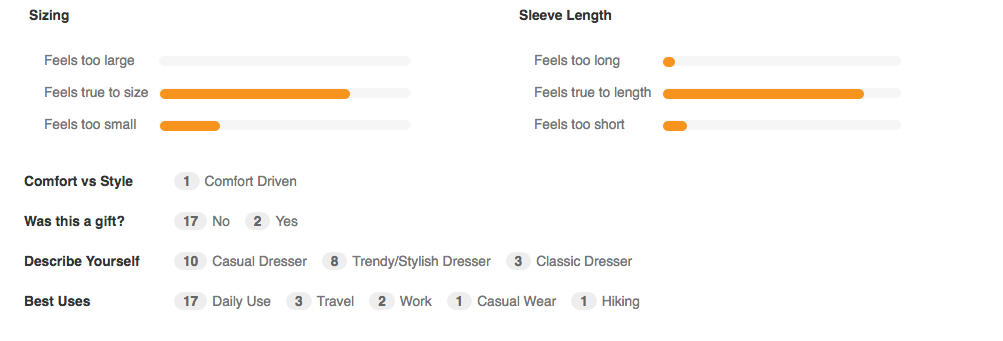
These details help those who are second guessing a purchase feel more confident in their buying decision. With full details in a great review, you eliminate doubt.
Qualified Reviewers Sharing Feedback
Shady tactics exist in the ecommerce space and as competition increases, brands and retailers may feel pressured to find ways to generate less-than-qualified reviews. Whether that’s by writing those reviews themselves or by buying them from someone with no product experience, this has lead to some distrust in the industry.
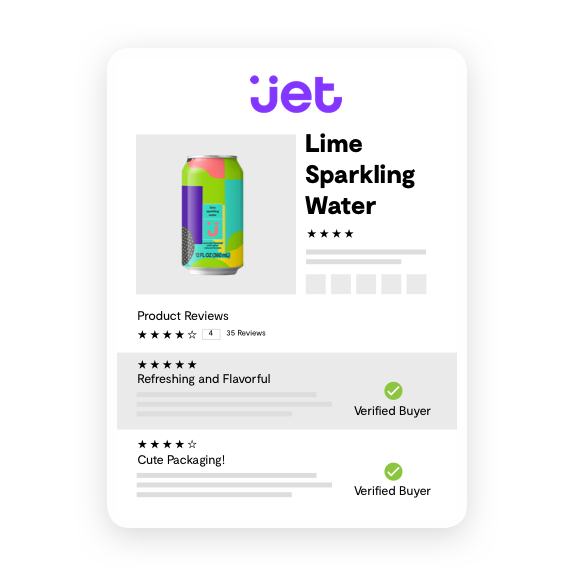
So it comes as no surprise that more than a third (36%) of shoppers say that reviews which clearly identify who wrote them, such as a verified buyer or a review written as a result of a free sample, were ‘very important’ or ‘important.’ As you start generating reviews, make sure you have a content moderation system in place to help weed out all of the unqualified reviews that could break the trust you’ve built with customers.
Negative Reviews Actually Help
It may come as a surprise, but negative reviews can actually increase your online sales. In fact, 82% of consumers specifically seek out negative reviews when shopping for a product. As strange as it may seem, shoppers say that poor reviews gave balance to their shopping research, stating that a negative perspective was either a “very important” or “important” factor influencing their decision.
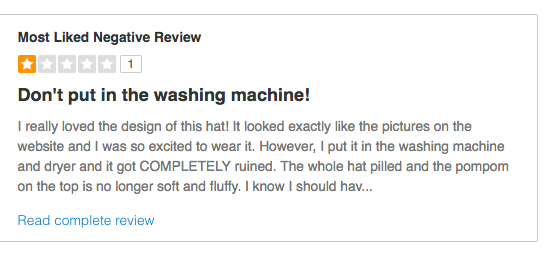
Before you hurry to sweep negative reviews under the rug, realize that not only do those reviews lend credibility to your products, but they also offer feedback to help create a better product for your customers. Not only that, but our data shows that customers are less likely to purchase products with a perfect 5-star review than one between a 4.2-4.5 rating.
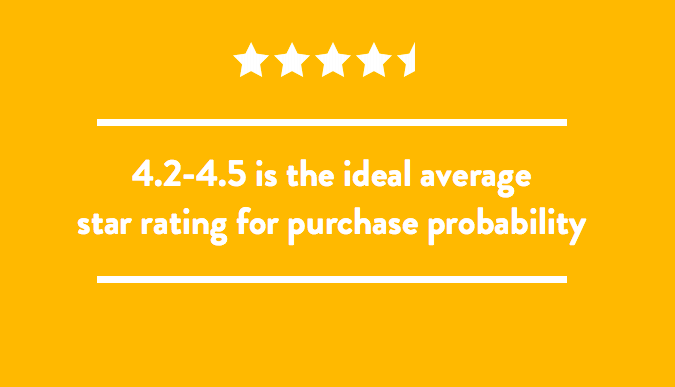
Answers to Popular Product Questions
Nobody knows what helps a customer convert better than the customers themselves. Let your customers ask questions on the product pages and respond in a timely manner to make the sale. If you can’t support the staff required to answer all of those questions, you can also use a product question and answer tool that allows past purchasers or community experts to respond on your behalf.
Check out this video with Skechers’ ecommerce Merchandising Manager, Timothy Lakin, to see how his team used customer questions to increase their product conversion rates by 32%.
User-Generated Content & Visuals
Almost all customers have a quick way to take a picture of your products to share, and it’s crucial to get them to share those images and videos on the reviews that they leave. Visual content on your product pages is the current must-do to stay competitive online. In fact, our Snapshot for Ecommerce report found 72% of consumers say they regularly or always seek out visual content prior to purchase.
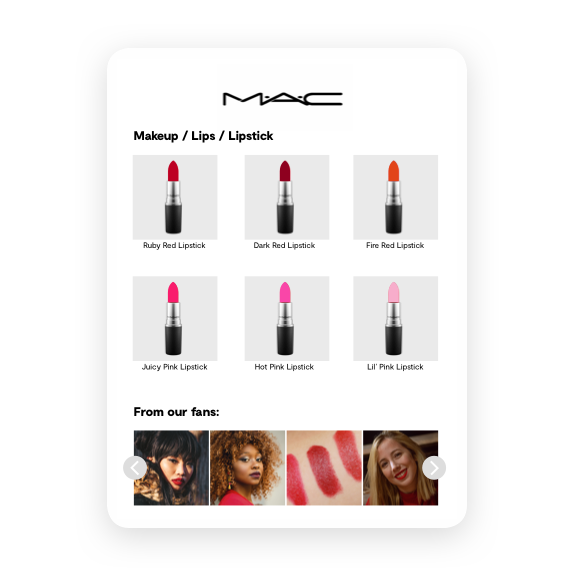
Using a visual and social display platform helps you collect social media content, authenticate it, get permissions and display it on your product pages. If your reviews provider isn’t doing all of these things, it might be time to make a switch. Create easy paths for your customers to share their images and videos with an Image Gallery on your product pages and give other shoppers a real-life look into it in use.
8 Ways to Get More Reviews & Generate More Content From Your Customers
Now that we’ve covered what a modern review looks like, why you need more content and the importance of quality, it’s time to dig into the tips on how to get more product reviews on your site. Let’s take a look at the eight ways to get more reviews from your customer:
- Pro Tip: If any of these ideas seem a bit overwhelming, please reach out to our team to learn how to implement, track and collect more reviews!
1. Encourage Customers to Write Reviews With Post-Purchase Emails
The first and potentially most obvious way to get more reviews for your products is to ask customers to submit them. They’re the most qualified to write about your brand.
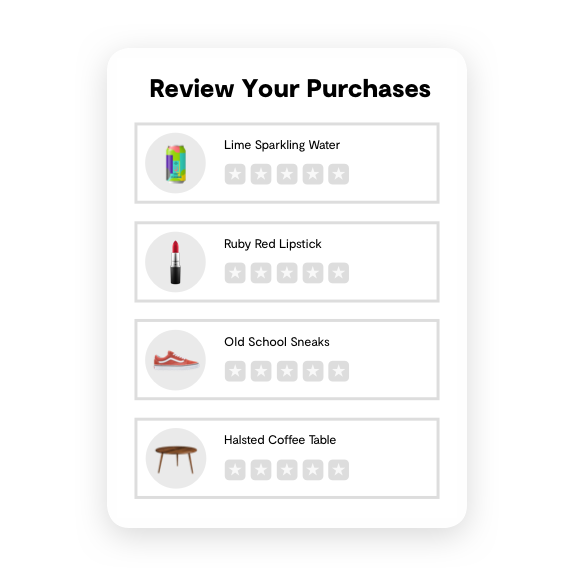
And assuming they’ve had a good experience, they’re the most likely to write something positive. Unfortunately, reaching out to each individual customer one-by-one isn’t an efficient way to drive as many reviews as you need. This is especially true since our previously mentioned report found only 42% of consumers say they leave feedback for their purchases.
Find a way to collect customer emails at the point of purchase. Whether that’s in your physical location or online, you don’t want too much time to pass before you ask for reviews. That’s why so many brands see great results with post-purchase emails. After enough time has passed since their initial order, you can ask for feedback through emails that recount the exact items you bought.
2. Incentivize Customers to Write Reviews
If simply asking your customers for reviews isn’t getting you the conversion rates you want, try incentivizing the process. Create motivation for your customers to write reviews for your products by offering them incentives for doing so.
Talk about a win-win situation…
You write us an honest review, and we'll give you a $25 Visa gift card that you can use anywhere 💰
Too good to be true? Nah, it's real.
Learn all about it here: https://t.co/aUjb6SEmed pic.twitter.com/lsmUlgAOM5
— Kentico (@Kentico) March 12, 2019
But before you start giving away items, be careful of what you offer in exchange for reviews. Even though many websites are fine with offering small incentives, some sites, like Amazon, are a bit more strict with their submission guidelines.
It’s important to remain as transparent as possible with your reviews, and create a system to badge different reviews based on whether the reviewer purchased or received an incentive. This helps build confidence in customers and shows transparency in your review collection process. Here’s a couple ways to authentically incentivize more product reviews:
- Review Sweepstakes: On average, our clients see an 83% uplift in review completion rates during sweepstakes campaigns. You can create sweepstakes in-house to promote and generate more buzz about your products.
- Offer Free Shipping or Discounts: By giving free or discounted shipping to customers in exchange for reviews, you get more buyers and increase product content. Additionally, using customer experience platforms like Journey IQ help brands and retailers provide discounts for mystery shoppers. Easily collect important experience information to better understand what your customers see when they make a purchase from you.
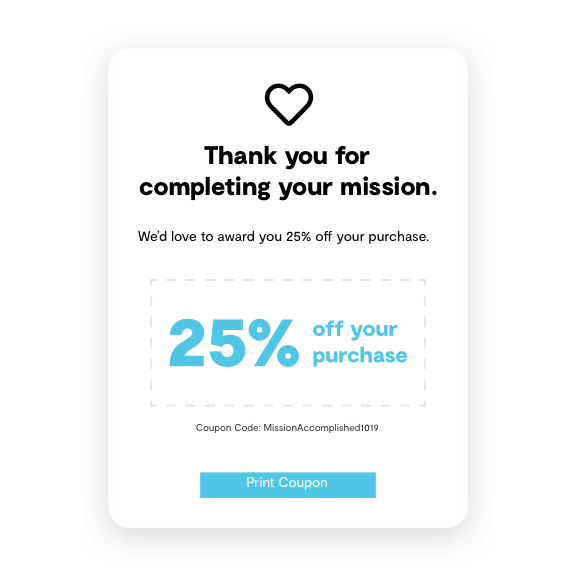
3. Optimize Your Review Forms for Mobile
If it hasn’t been drilled into your mind enough quite yet, please note that mobile optimization is incredibly important. In fact, StatCounter found mobile internet usage surpassed desktop in 2016.
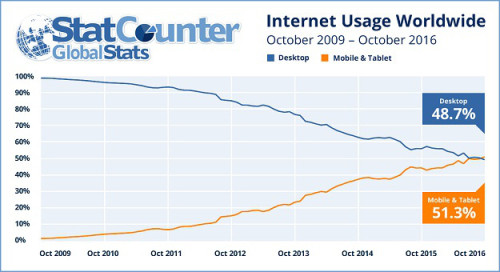
Another PowerReviews customer who does an amazing job on mobile is Evo, a leading retailer for outdoor apparel and gear. The retailer discovered more than 50% of of their emails are opened via a mobile device, which in turn, incentivizes shoppers to make purchases on these devices.
Instead of viewing this as a potential problem, Evo found a solution to convert those mobile viewers to reviewers. In fact, the retailer teamed up with PowerReviews to update and implement a fully responsive and mobile friendly post-purchase email process.
With the implementation, their team saw a 203% spike in written reviews on mobile devices year over year. Taking advantage of your mobile traffic is just one way you can successfully generate more product reviews.
4. Make It Easy to Review Multiple Purchases at Once
The key to getting more reviews for your products is to make it simple for customers to leave them. Many of your online shoppers buy multiple items at a single time. It doesn’t make sense to send them individual follow-ups asking them to review their purchases one at a time.
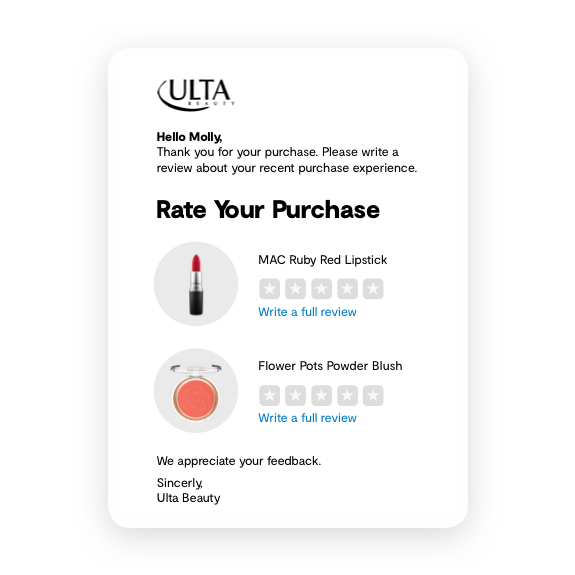
Instead, when emailing your customers, include all of their recent purchases so they can review them at a single time. Whether you’re emailing customers from your own database or leveraging a ratings and review platform, including multiple items significantly increases overall collected content on your site.
The less time users spend, the more review content you will collect. After all, no one wants to click back and forth through different pages to leave multiple reviews. Provide an all-in-one view to write content and create a better experience.
5. Use a Product Sampling Program
If you don’t have many recent customers to look to, it’s hard to generate review content. This is even true for the biggest brands and retailers as new product launches often take time to generate buzz or review content.
However, running a product sampling campaign is the best way to generate content when you don’t have the large customer amounts. Reach out to massive sampling communities filled with everyday and micro-influencers to write authentic feedback about your products.
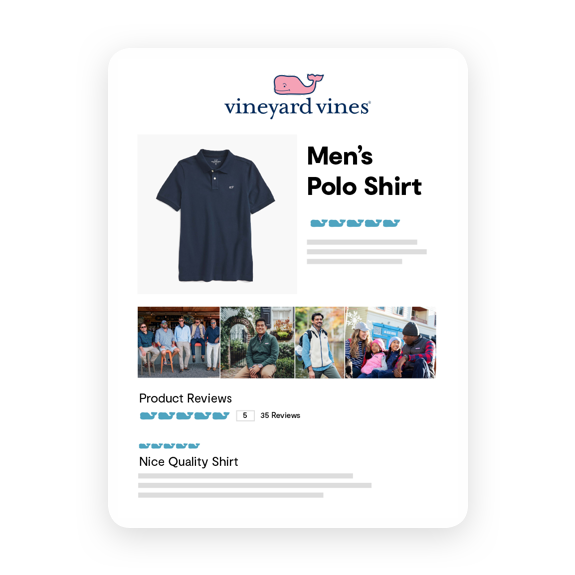
Through product sampling tools like BzzAgent, brands reach a massive group of people wanting to provide visuals and reviews. These folks also want to share their experiences across social channels–all for a free sample. This helps build interest for your products and generate more high quality reviews.
Situations to Run a Sampling Campaign
If you’re still on the fence about product sampling, see some of the most common situations why businesses run them:
- A New Product Launch: If you launch a new product with no reviews at all, it’s going to be tough to build trust. Not only will product sampling increase the general awareness of your new product, but you’ll also drive invaluable product feedback.
- High Turnover Seasonal Products: When you have seasonal products requiring rapid inventory turnover, it’s tough to get a lot of reviews in a short amount of time. Get a jump on the seasonal competition by increasing traffic and conversion with a product sampling campaign before you launch.
- Target Unique Audiences: This is perfect if you need a more targeted audience for your products. Get unique products out to the customers who actually want them and are willing to share their experience with friends.
- Small Review Count With Low-Quality Reviews: If you’re your current reviews are low quality, add more reviews. While you never want to promote only positive reviews, running a sampling campaign increases the overall number of reviews. This in turn, increases low-review product pages to high review pages, likely increasing your overall rating.
6. Design & Share Reviews on Social
More than anything, customers just want a platform to express their feedback and know they’re heard. If you don’t recognize that need, you could miss out on valuable reviews. In the previously mention report, we found 55% of consumers who don’t write reviews said they needed a reward or recognition to do so.
One easy way to show users you’re recognizing their contributions is to share their reviews on social. Either directly share their quote–while making sure to give them credit–or simply repost a positive experience.
…And sometimes, at just the right time, the universe (and @usps) delivers what you need … I present you the official pillow of #NationalNappingDay by @Casper – Jess and I both say THANKS and ZZzzzz pic.twitter.com/pfz8Wgkbom
— Michele J Martin (@michelejmartin) March 12, 2019
Casper is always willing to retweet a good customer experience. This creates transparency and it can help drive more reviews if you link to your product pages asking for more reviews!
7. Collect Different Forms of Product Reviews
Images and videos are crucial aspects of strong customer reviews and increase the likelihood of purchase. In fact, our Snapshot for Ecommerce report discovered 72% of shoppers are more likely to buy a product with reviews featuring photos and videos. Allowing customers to submit photos and videos as part of reviews increases the amount of unique content. At the same time, you’ll increase customer conversion.

Leverage a tool with image displays so customers see products on or in use by people just like them. Promote visual content with easy submission features to directly display the content on your site.
8. Use a Trusted Ratings & Reviews Platform
As you likely noticed, this article mentions various ways to generate, display and syndicate product reviews. By implementing this software, brands and retailers increase content collection and the confidence in their purchasing decisions.
To recap, let’s take a look at our reasons we believe you need a trusted ratings and reviews partner:
- Collect content from various channels like post-purchase emails and write-a-review forms
- Display reviews with customizations like size and fit
- Provide ways to host and display visual content like customer images and videos
- Optimize your review content for search and increase your traffic and rankings
- Syndicate all of the reviews brands generate to retailers or increase a retailer access to reviews from brands
- Add functionality to help increase conversion, such as streamlined product questions and answers
So if you’ve tackled all of the strategies that we’ve listed and are still hungry for more reviews, get in touch with PowerReviews to learn how our platform helps brands and retailers drive traffic, sales and insights.
As always, reach out to us on Twitter to provide your best practices as well!






